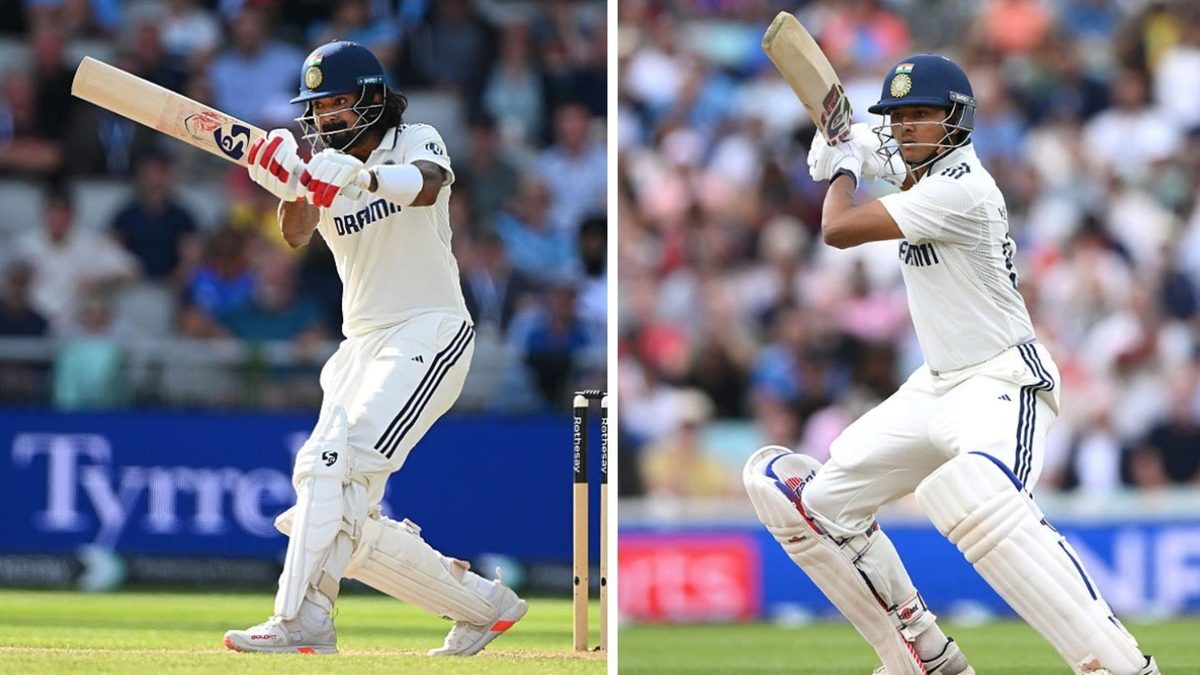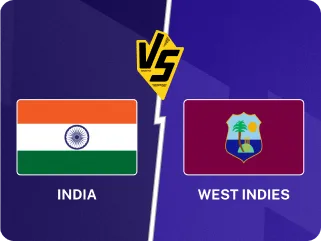
Left-right batting partnerships are all the rage in limited-overs cricket. Rahul Iyer explores whether a case can be made for encouraging them in Test cricket as well.
‘Matchups’ are ubiquitous in T20 cricket. In 2025, it is an achievement to make it through an entire match without the topic being brought up by broadcast commentators.
Pairing a right- and left-handed batter has long been accepted in the shortest format as an effective tactic, particularly against spin. It ensures that at any point, one of the batters can attempt to hit out against a bowler who turns or angles the ball back into their hitting arc, rather than away from it.
In T20 cricket, where the contest is significantly smaller than other forms, such marginal gains are not uncommon. Conversely, it means that this level of detail is not seen as primary in longer forms, like Test cricket.
Since taking over as India head coach last year, Gautam Gambhir, who cut his teeth in the T20 game, has shown an inclination to ensure positive matchups even in the 50-over format.
Read more: Gambhir’s left-right fixation means India no longer have a batting order
At Old Trafford in the recent India-England Test series, Shardul Thakur was sent in at No.7 above Washington Sundar in the first innings, before Sundar was promoted to No.5 in the absence of Rishabh Pant in the second innings.The Thakur promotion was puzzling, given his batting pedigree relative to Sundar, and there were suggestions that India may have wanted a left-right pair in the middle (Ravindra Jadeja was already batting).
Whether or not that was indeed India’s motivation, it does prompt the question: how valuable are left-right pairings in Test cricket?
Do left-right pairings have an advantage in Test cricket?
Different-hand pairings in the longest format are usually discussed as advantageous in terms of unsettling opposing bowlers; i.e. throwing them off their lines and lengths.
With same-handed batters at either end, it is considered easier for bowlers to settle on a line and length, and hit it consistently. With one right-hander and one left-hander, having to constantly shift the line, in particular, can prove more difficult for them to keep troubling batters. An initial look at partnership averages in the 21st century would appear to support that theory.
Batting averages for all three partnership types (right-right, left-left and left-right) have seen a steady decline over the last decade or so, thanks largely to the rise of the wobble-seam ball and the incentivising of result-oriented pitches by the World Test Championship.
But at the end of every year since 2006, left-right partnerships (among regular batters) end up with the highest average among all three – their early trailing behind the left-left partnerships was a result of the outsized contribution of one left-left pair in Australia’s Matthew Hayden and Justin Langer. Left-left combinations saw one blip in 2007, after Langer’s retirement broke up that partnership for good.
Right-right pairs lagged behind early on, but it is perhaps only natural that there was an evening out of sorts; simply by their weight of numbers, enough quality right-handed batters would emerge to drag it back up. This includes the ‘Fab Four’ of the 2010s – Joe Root, Steve Smith, Virat Kohli and Kane Williamson.
But while left-right pairs average highest even now, the difference is miniscule, just 40 vs 39.2 vs 38.5 – hardly enough for any team to hang their hat on consciously trying to create different-handed pairs, at the expense of keeping players in their preferred positions.
Are there situations that could make the endeavour worthwhile though?
The curious case of spin-dominant conditions
The first one that comes to mind is the same ‘use case’ as in T20 cricket – to counter spin. Perhaps when an opposition team operates with two (or more spinners), ensuring left-right pairings would be prudent, in an effort to force bowlers to constantly change the modes of dismissal they look to effect.
Surprisingly, there does not appear to be a significant advantage for left-right pairs in such cases. The following chart shows partnership trends in matches where the bowling team sends down over 50% of deliveries as spin – a rough proxy for matches played on spin-friendly wickets.
Left-left partnerships show more variance thanks to their smaller sample size, but all three types of partnership stabilise at a batting average of around 40.
Opening stands in these matches are quite interesting, though. Left-right and left-left pairs both average close to 40, but right-right pairs have consistently averaged in the low 30s across this century.
Even in games like these, where the majority of deliveries are from spinners, opening batters are still usually facing seam bowling with the new ball – the data would suggest that having a left-hander at the top could be beneficial.
This trend is not replicated in any of the other top six partnerships, though. In fact, as one goes lower down the order, left-right partnerships come out looking worse than either of the same-hand pairings (do play around with the interactive chart and have a look).
It is nearly impossible to say why this is the case, but here is a theory: on spin-friendly surfaces, most teams ensure they have at least one spinner who can turn the ball each way.
Perhaps then, the bowling team can more easily match up their left-armer to the right-handed batter, and vice-versa. Turning over the strike may not always be a risk-free option, as it can be on flatter T20 wickets.
The success of the partnership, then, probably depends more on the batters themselves than their handedness.
In these conditions this century, 15 batting pairs for the top six wickets have averaged over 50 across 20 or more innings. Seven are left-right pairs, seven (including all of the top five) are right-right and one is left-left – supporting the theory that there may not be any real advantage gained here.
Highest averages – top six batting partnerships where opponents bowl over 50% spin
Batter 1 | Batter 2 | Type | Inns | Runs | Avg |
Mahela Jayawardene | Thilan Samaraweera | R-R | 23 | 2240 | 97.4 |
Younis Khan | Misbah-ul-Haq | R-R | 21 | 1406 | 82.7 |
Jacques Kallis | Hashim Amla | R-R | 20 | 1456 | 80.9 |
Virat Kohli | Ajinkya Rahane | R-R | 21 | 1419 | 74.7 |
Younis Khan | Azhar Ali | R-R | 20 | 1413 | 70.7 |
Left-right partnerships may benefit teams more against pace-heavy attacks
Does any of this change in seam-dominant conditions?
An initial look says it might. In matches where the batting team face over 75% of seam, left-right partnerships for the first six wickets have consistently been in the mid-to-high 30s, currently standing at 35. Both same-hand partnerships have remained in the lower 30s, and are currently around 32.
A difference of three runs per wicket doesn’t sound like much, but that is across the entire top six. Drilling down might reveal more significant ones.
Just as in the case of spin-dominant attacks, right-right opening pairs are by far the worst-performing of the three groups. Left-right pairs average over six points higher.
Left-left pairs come out on top, but at least partly due to some skewing from the cream of the crop. There have been 65 left-left pairs and 353 partnerships in these conditions, but the top four pairs account for over 30% of the partnerships.
Most frequent left-left opening stands – where opponents bowl over 75% seam
Batter 1 | Batter 2 | Inns | Runs | Avg |
Alastair Cook | Andrew Strauss | 35 | 1277 | 37.6 |
Matthew Hayden | Justin Langer | 35 | 1684 | 52.6 |
David Warner | Usman Khawaja | 18 | 618 | 34.3 |
Andrew Strauss | Marcus Trescothick | 17 | 743 | 46.4 |
For second-wicket stands, this difference has been even more stark. Left-right partnerships never dipped below an average of 30 this century, while right-right partnerships never went above 30. Left-left partnerships went both ways, before stabilising around that mark.
Third- and fourth-wicket partnerships show little difference between the different pairings, all hovering around the 34-37 range. But a slightly higher average for left-right pairs re-appears in fifth- and sixth-wicket stands.
So, what exactly is going on here?
Against pace-heavy attacks (and most likely, pace-friendly conditions), it may be the condition of the ball that dictates a large portion of partnership success.
With more assistance from a new ball early on (first & second wicket stands), same-hand pairs are likely at a disadvantage as quicks can settle on a line and length quickly. But for a primarily out-swing or in-swing bowler to adjust to different-handed batters can be an issue.
When the assistance from the ball goes down (third & fourth wicket stands), the handedness of the pairs may cease to affect the partnership as much, so there is no real advantage there. It perhaps begins to matter again, once reverse swing and/or the second new ball begin to come into play around the 80th over (usually around the time fifth/sixth-wicket stands might be in action).
Left-right pairs in Test cricket, yay or nay?
It appears that certain scenarios and conditions lend themselves to giving left-right pairs an advantage. One which seems to have quite strong backing is a left-right opening pair.
But beyond that, there does seem to be a tangible advantage in pairing a right-hander with a left-hander in an attempt to counteract periods of play where there is assistance for quick bowlers, either from the wicket or other conditions.
If No.3s are now not necessarily expected to contribute big runs, and instead make the task easier for the batters that follow, could teams retain multiple options and make a choice depending on whether a left- or right-handed opener is dismissed first?
The notion of a fixed batting order is long gone in short-form cricket. Batters themselves are somewhat averse to this, as many like to have a concrete number in the order. But as it seems, there could be cases for shuffling even in the longest format.
Follow Wisden for all cricket updates, including live scores, match stats, quizzes and more. Stay up to date with the latest cricket news, player updates, team standings, match highlights, video analysis and live match odds.








